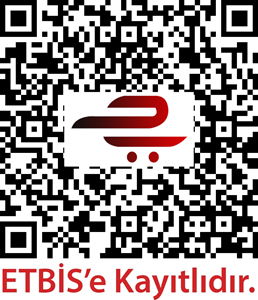Hiç mesaj bulunmadı
| Ödeme Türü | Toplam Tutar |
|---|---|
| Diğer Kredi Kartları | 420.00 TL |
| Havale / Eft | 420.00 TL |
| Posta Çeki | 420.00 TL |
| Kapıda Ödeme | 430.00 TL |
Kapıda ödemeli siparişlerde +10,00TL kapıda ödeme hizmet bedeli ilave edilir. |
|
- Vade farksız taksitler KOYU renkte gösterilmektedir.
- X+X şeklinde belritilen taksitler (Örneğin: 2+3) 2 taksit olarak işleme alınmakta ancak ilgili bankanın kampanyası dahilinde 2 taksit üzerinden işlem yapıldığı halde 2+3 yani 5 taksit olarak kartınıza ve ödemenize yansımaktadır. (2 taksit seçilmiş olsa bile banka kampanyası dahilinde ekstradan vade farkı eklenmeden işlem 5 taksite bölünmektedir.)
CHAPTER 1
INTRODUCTION
1.1. Problem Statement
1.2. Purpose of the Study
1.3. Research Problems and Sub-Problems
1.4. Importance of Research
1.6. Limitations and Restrictions
1.6. Definitions
CHAPTER 2
THE THEORETICAL BASIS OF THE RESEARCH
2.1. The Concept of Giftedness From Past To Present
2.2. What is Giftedness in Mathematics?
2.3. Development of Mathematical Ability
2.4. Mathematical Creativity
2.5. Sub Dimensions of Mathematical Creativity
2.6. Mathematical Modeling Activities and the Emergence ofMathematical Creativity
2.7. Related Research
2.7.1. Mathematical Giftedness and Mathematical Creativity Research
2.7.2. Studies Investigating Mathematical Creativity Based onMathematical Modeling Activities
CHAPTER 3
METHOD
3.1. Research Design
3.1.1. Education in Science and Art Centers
3.1.2. Physical Structure of the Science and Art Center and School Culture
3.1.3. Mathematics Courses in Science and Art Centers
3.2. Selection of Participants and Focus Groups
3.2.1. Participants
3.2.2. First Focus Group Participants
3.2.3. Second Focus Group Participants
3.3. Data Collection Process
3.3.1. Pre-Application
3.3.2. Pre-Practice Observations
3.3.3. Data Collection
3.4. Data Collection Tools
3.5. Data Analysis, Analysis and Coding
3.5.1. Analyses for the First and Second Research Problems
3.5.2. Analyses, Analyzes and Coding for the Third Research Problem
3.6. Validity and Reliability
3.7. Ethics
3.8. Role of the Researcher
CHAPTER 4
FINDINGS AND COMMENTS
4.1. Mathematical Creativity of the First Focus Group
4.1.1. Students’ Creativity in the Process
4.1.1.1. Fluency and Flexibility
4.1.1.2. Progressivity
4.1.1.3. Mathematical Connections
4.1.2. Evaluation of Products in terms of Creativity
4.1.2.1. Quality and Generalizability
4.1.2.2. Originality
4.1.3. Students’ Common Creative Thinking Skills
4.1.4. Sample Case Analysis: The Quilt Problem
4.1.4.1. Solving the Quilt Problem and Progressivity
4.1.4.2. Analysis of the Solution Process in terms of Creativity: The Quilt Problem
4.1.4.2.1. Fluency
4.1.4.2.2. Flexibility
4.1.4.2.3. Attribution
4.1.4.2.4. Quality and Originality
4.2. Mathematical Creativity of the Second Focus Group
4.2.1. Students’ Creativity in the Process
4.2.1.1. Fluency and Flexibility
4.2.1.2. Progressivity
4.2.1.3. Mathematical Connections
4.2.2. Evaluation of Models in terms of Creativity
4.2.2.1. Quality and Generalizability
4.2.2.2. Originality
4.2.3. Students’ Common Creative Thinking Skills
4.2.4. Sample Situation Analysis: Bigfoot
4.2.4.1. Solving the Bigfoot Problem and Progressivity
4.2.4.2. Creativity Analysis of the Resolution Process: Big Foot
4.2.4.2.1. Fluency
4.2.4.2.2. Flexibility
4.2.4.2.3.Attribution
4.2.4.2.4. Quality and Originality
4.3. Individual Creativity of Gifted Students
4.3.1. Students’ Individual Mathematical Creativity in the Process
4.3.1.1. Ideas for the Allowance Problem
4.3.1.2. Students’ Fluent Thinking Skills
4.3.1.3. Students’ Flexible Thinking Skills
4.3.1.4. Students’ Associative Skills
4.3.1.5. Quality of Student Products
4.3.1.6. Originality of Student Products
4.3



